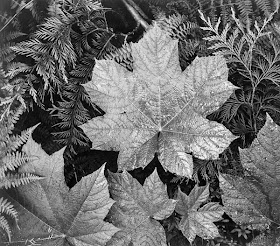 I have occasionally read articles by Roger Scruton over the years, but recently my friend Maureen Mullarkey posted an item on her blog about his book Beauty. Maureen has great taste in writing and in artists, so I immediately acquired the book. Scruton writes the clearest, most accessible prose, breaking down really big ideas into portion athat non-philosophical minds (like mine can grasp. Herewith an example, from the chapter "Natural Beauty," in which he distinguishes our experience of, say, the songs of birds and the colors or shapes of flowers from works of art:
I have occasionally read articles by Roger Scruton over the years, but recently my friend Maureen Mullarkey posted an item on her blog about his book Beauty. Maureen has great taste in writing and in artists, so I immediately acquired the book. Scruton writes the clearest, most accessible prose, breaking down really big ideas into portion athat non-philosophical minds (like mine can grasp. Herewith an example, from the chapter "Natural Beauty," in which he distinguishes our experience of, say, the songs of birds and the colors or shapes of flowers from works of art:"Works of art are expressly presented as objects of contemplation. They are framed on a wall, contained between the covers of a book, installed in the museum or reverently performed in the concert hall. To change them without the artist's consent is to violate a fundamental aesthetic propriety. Works of art stand as the eternal receptacles of intensely intended messages. ... Nature, by contrast, is generous, content to mean only herself, uncontained, without an external frame, and changing from day to day."
I also like his use of the term "apartness" to speak of natural phenomena, "their capacity to show that the world contains things other than us, which are just as interesting as we are."
Now, it was in the 18th century that people discovered nature as an object of aesthetic interest. Starting with the English critic John Dennis and then expanded on by Joseph Addison, the experience of the natural sublime was practically synonymous with an encounter with grand mountains (and also with the starry skies above and so on). In the essay I am writing on Bodmer, I have posed this question: Why in none of his treatises on poetry did Bodmer consider natural experience or natural beauties as potential poetic subjects? Surrounded his entire life long (1698-1783) by the mountains of Switzerland, about which otherwise so much ink was spilled in the 18th century, he never even mentions them when writing of "the Great" in nature, a notion he took over from Addison. Bodmer never uses the term "sublime" in reference to nature's effects. "Sublime" is reserved for the portrayal of noble and grand actions. Even the actions of Satan in Milton's Paradise Lost can be described as sublime, exceeding as they do in evil. When speaking of the grand in nature he resorts to stock formulas that are repeated by almost every writer on the sublime in the 18th century -- mountain gorges and abysses, violent storms, shipwrecks -- all drawn from literary accounts. The real world of nature does not interest him.
 Bodmer's late essay on the sublime of 1746 indicates that he was aware of the connection that was being made between the sublime and personal encounters with nature. Reading Scruton, I seem to see that Bodmer's conventional references to nature, whether of natural beauty or of grandeur, are attempts to "frame" nature, to place it in a poetic world of its own, where the imagination can, as Scruton writes, "wander freely, with our own interests and desires in abeyance." Thus, his literary examples came from Homer and Virgil and even from some early 18th-century German poets (e.g., Brockes). Whether it is scenes of nature or of human action, the works of those poets, as Scruton writes, "come to us soaked in thought." Art is thus "freed from the contingencies of everyday life."
Bodmer's late essay on the sublime of 1746 indicates that he was aware of the connection that was being made between the sublime and personal encounters with nature. Reading Scruton, I seem to see that Bodmer's conventional references to nature, whether of natural beauty or of grandeur, are attempts to "frame" nature, to place it in a poetic world of its own, where the imagination can, as Scruton writes, "wander freely, with our own interests and desires in abeyance." Thus, his literary examples came from Homer and Virgil and even from some early 18th-century German poets (e.g., Brockes). Whether it is scenes of nature or of human action, the works of those poets, as Scruton writes, "come to us soaked in thought." Art is thus "freed from the contingencies of everyday life."Scruton doesn't mention it, but it may be that freedom "from the contingencies of everyday life" is what attracts us to nature, whether to walks in the country or, in my case, kayaking on the river in the summer. (Kayak season starts in exactly one month, when the water temperature reaches 55 degrees.) Just being lazy, without any purpose.
Novalis also explored the "apartness" of nature and how this affected the relationship between nature and the artist. For a more in-depth discussion: http://charleshaddox.blogspot.com/2011/04/love-is-supreme-poetry-of-nature.html
ReplyDelete